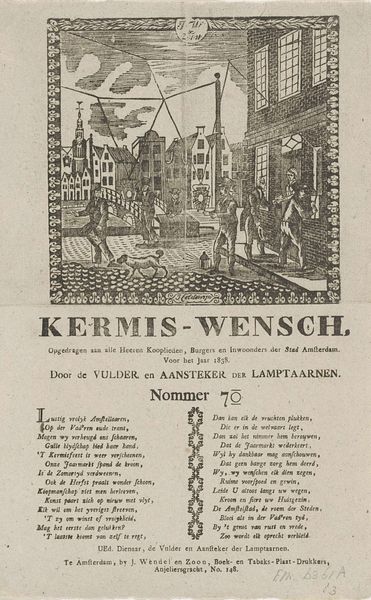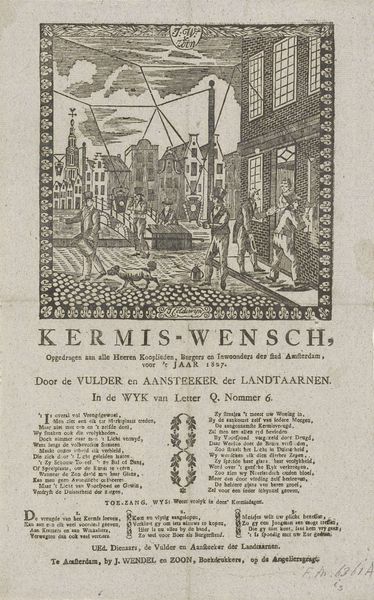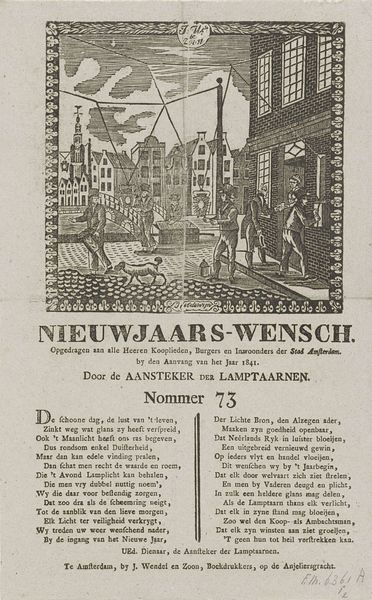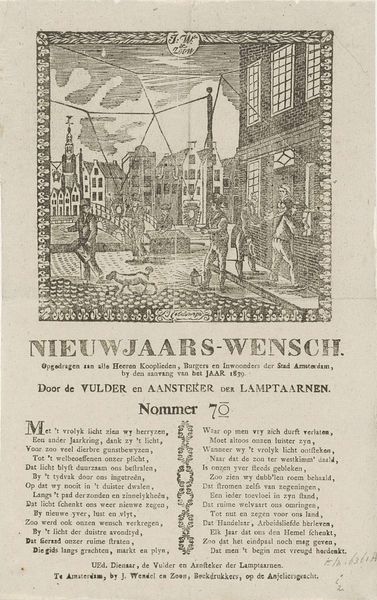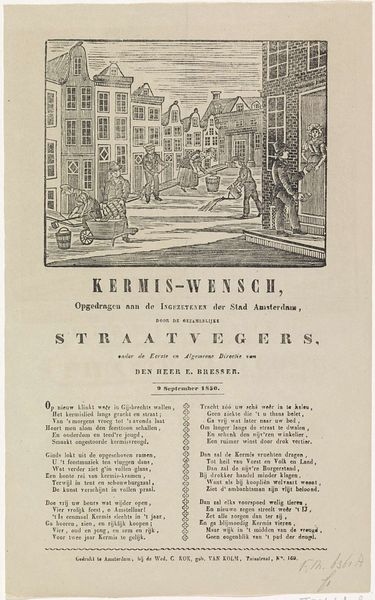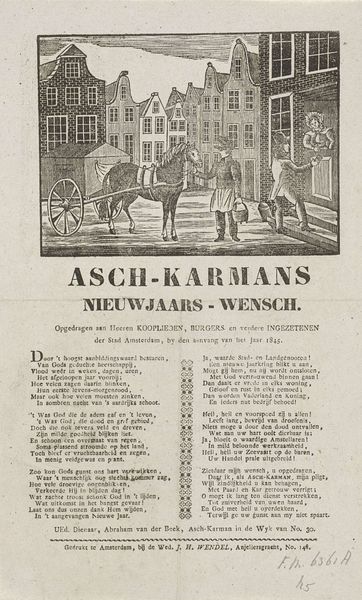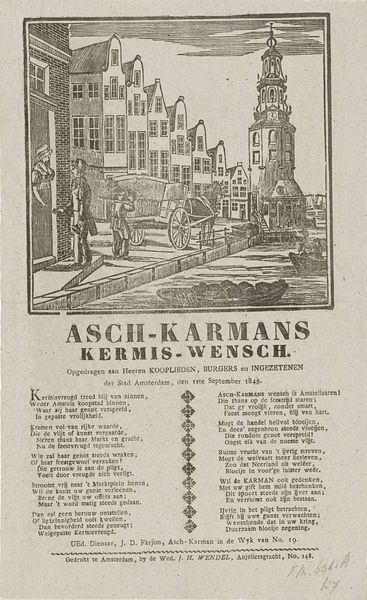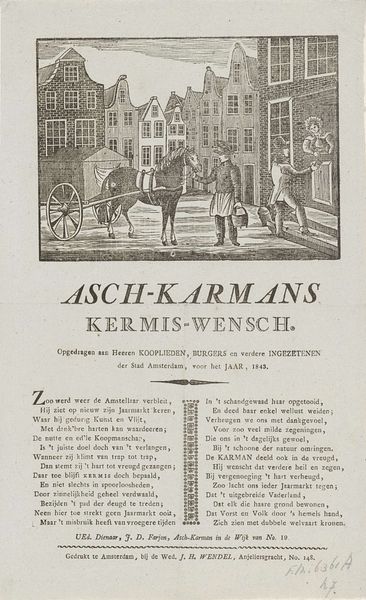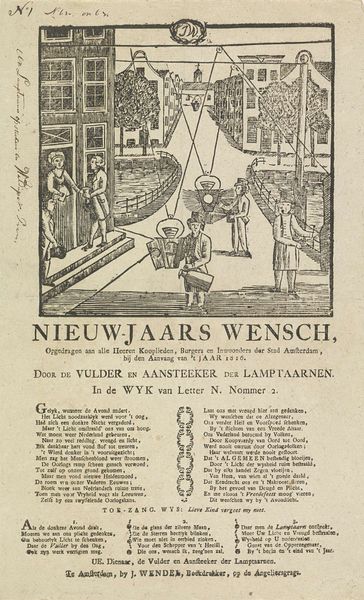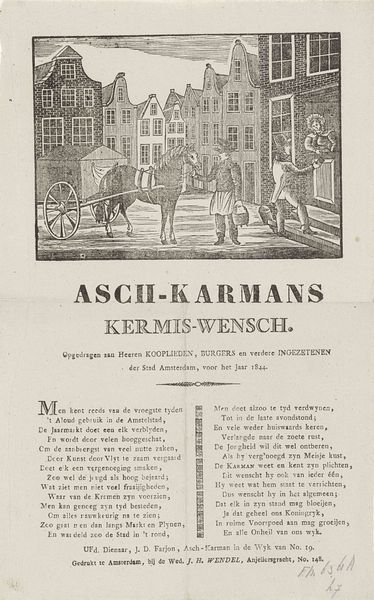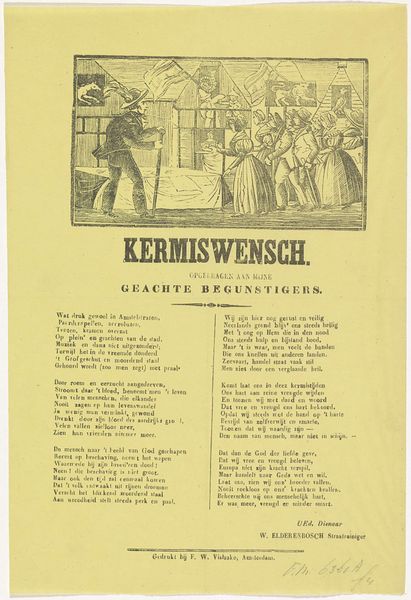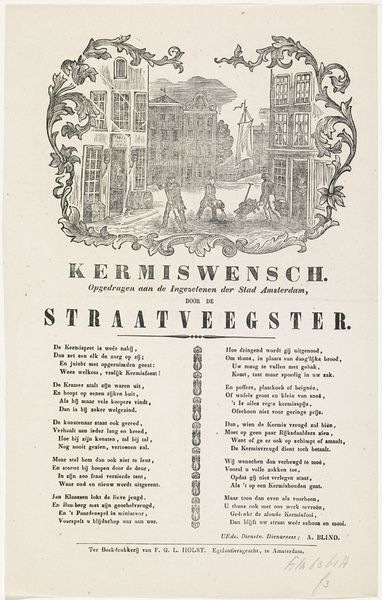
Kermisprent van de lantaarnopstekers van Amsterdam voor het jaar 1837 1837
0:00
0:00
print, engraving
#
narrative-art
#
dutch-golden-age
# print
#
cityscape
#
street
#
engraving
Dimensions: height 338 mm, width 210 mm
Copyright: Rijks Museum: Open Domain
Curator: Look at this interesting print: "Kermisprent van de lantaarnopstekers van Amsterdam voor het jaar 1837," an engraving dating back to 1837, now held at the Rijksmuseum. Editor: My first impression is how surprisingly geometrical the scene is! The way the lantern support lines carve up the sky above those quaint Amsterdam buildings is fascinating, it has a near abstract quality against the otherwise traditional scene. Curator: The image does present an intriguing tension between representation and pure structure. Notice how the artist, Jacob Coldewijn, used the lantern's rigging as a deliberate compositional element. But beyond that, it's also a slice of Amsterdam life, right? With street lighting central to that narrative. Editor: Absolutely. Street lighting represents progress and safety, dispelling darkness, both literal and metaphorical. This print serves as a tribute to the lamplighters, suggesting their work is symbolically connected to civic prosperity and perhaps even enlightenment values. I see this as a statement piece. Curator: Indeed! And consider the engraving itself. The crisp lines and stark contrast create a sense of clarity, even order. The spatial relationships are flattened to increase the graphic impact—the artist prioritizing overall form over pure perspectival accuracy. Editor: Yet, even within that formal control, look at the small details; the figures populating the streets, that lone dog trotting along, there is social context, it brings so much character to the geometrical landscape. Curator: It does. Perhaps Coldewijn wanted to elevate what may have been seen as quotidian, functional cityscapes into something worthy of aesthetic contemplation. It transcends being merely informative. Editor: For me, this piece reminds us that light, literally and figuratively, has always been essential to civilized life. The work honors those who provide this civic service, giving form and function equal respect in visual rendering. Curator: Seeing the print through the lens of both composition and content does give me a new appreciation for its innovative structure. Editor: And for me, the symbols and history within a seemingly straightforward image shows me the rich interplay between public service and social perception, revealing deeper layers.
Comments
No comments
Be the first to comment and join the conversation on the ultimate creative platform.
